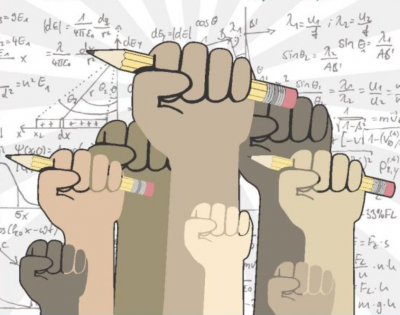Mathematics of Racism

We will explore how mathematics can be used to understand, explore, and investigate racial and social injustices in the United States. We live in a society where mathematics is at the foundation of many injustices. In " The Mathematics of Racism," you will use mathematics to explore and examine various topics that allow us to understand systemic racism in the United States. Each week we will examine either a current topic or one or more of the following topics in depth:
1. The history of systemic racism in the United States (introduction, various math topics).
2. Redlining/Gerrymandering (ratio, proportion, geometry, efficiency gap)
3. Impact of the 1965 Voting Rights Act (proportional reasoning, ratio, rate, percent) on representation in Congress.
4. Power, representation in the supreme court (linear functions, rate, ratio, graph reading)
5. Education, Overrepresentation of BIPOC in remedial math classes (ratio, proportions)
6. Ableism/Racism in classrooms (indigenous math)
7. Prisons, Overrepresentation of BIPOC in prisons (ratio, proportions)
8. Pay and wealth gap
9. What’s the risk? For whom? (Comparing risks across different groups, Probability & Stats)
10. Representation on Google, Hey Google who is a mathematician? A doctor? Etc.
We will work on understanding the situation of Portland in depth and share our understanding with the teachers in Portland Public Schools.
We will use visualizations to create community maps/Infographics for specific school boundaries that allows teachers and parents to "know" the neighborhood the school is located in better.
The goal is to provide resources for teachers to draw on to connect the in school academics to the students' lived experiences. We will explore all aspects of the statistical inquiry cycle (Formulate Questions, Collect Data, Analyze Data, Report/Visualize Data). The project will draw on the strengths/assets of the neighborhood.
A focus will be on collaborating with the community to create the visualization. The goals will be to:
1. Create Community Maps/Infographics,
2. Compare across Maps/Infographics,
3. Collect insight into communities.
